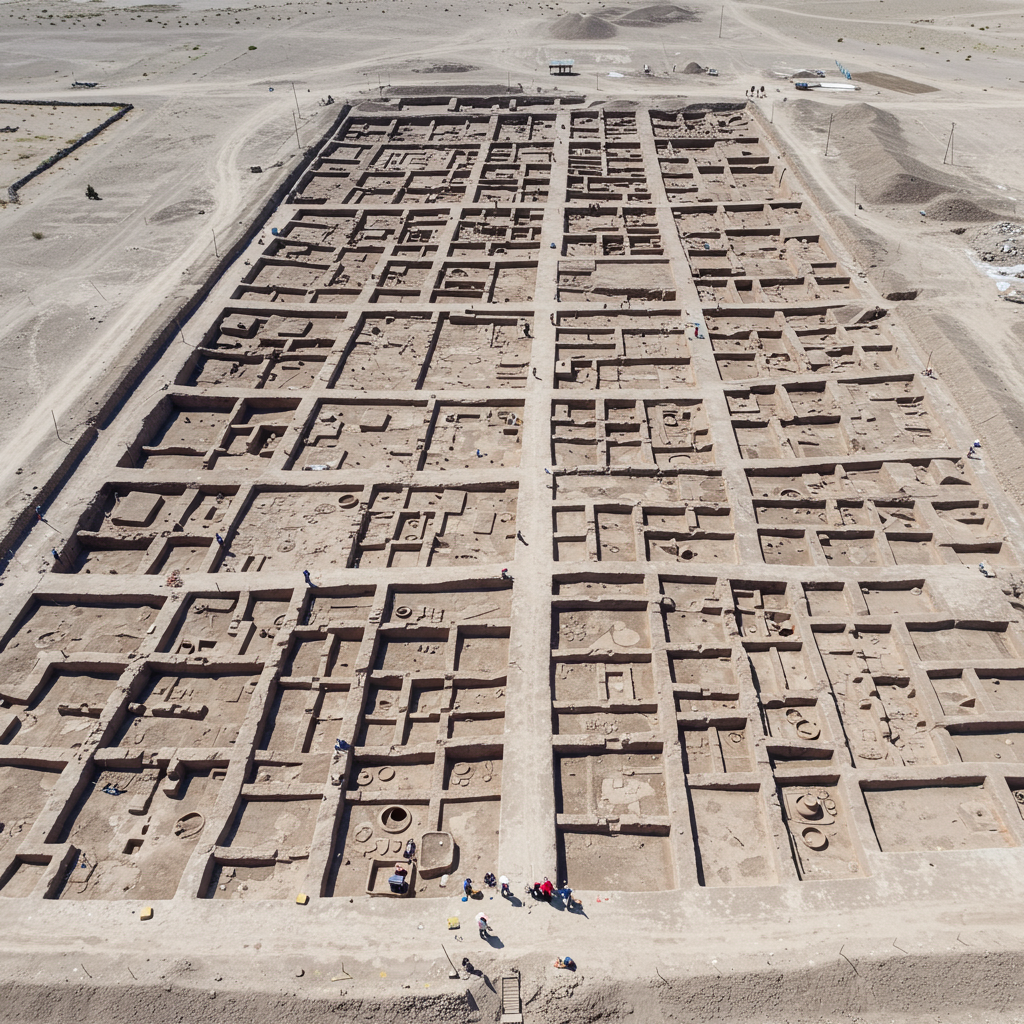A mystery spanning more than a decade across continents has finally found resolution thanks to remarkable advancements in forensic science. A British man discovered deceased in the United States years ago has now been positively identified. This breakthrough offers a powerful illustration of how cutting-edge DNA technology is transforming the landscape of cold case investigations. For one family, it provides long-awaited answers about a loved one who seemed to vanish without a trace.
The Unidentified Man in Arizona
The story began in 2013 in the Phoenix area of Arizona. Authorities discovered the body of an elderly man. He carried no identification and possessed no personal belongings other than the clothes he was wearing. His identity was a complete enigma. Investigators struggled to determine who he was or where he came from. Lacking any immediate clues, he became known simply as “Maricopa County John Doe 2013.” Years passed, and the case remained unsolved.
The man was believed to be visiting a friend in the area when he died at the age of 75. His friend could provide a name, but with no known family connections, police hit a wall. The mystery deepened as traditional investigative methods yielded no results. The case joined a vast list of unidentified individuals across the United States, awaiting a potential breakthrough.
Investigative Genetic genealogy: A Game Changer
The crucial turning point arrived through the application of Investigative Genetic Genealogy (IGG). This specialized technique represents a significant leap in forensic capabilities. IGG doesn’t rely on finding a direct DNA match in a criminal or law enforcement database. Instead, it combines advanced DNA analysis with traditional genealogical research. Scientists build a comprehensive DNA profile from unidentified remains or crime scene evidence. They then upload this profile to public DNA databases used by people exploring their family history.
Researchers search for distant relatives of the unknown individual among the millions of profiles in these databases. They construct extensive family trees based on the connections found. By tracing lineage through multiple generations, they can narrow down possibilities. This process aims to identify either the individual themselves or close family members who can then help confirm the identity.
Collaboration Unlocks the Mystery
The breakthrough in the Maricopa County John Doe case was the result of collaborative research. Teams from Sheffield Hallam University in the UK and Ramapo College in New Jersey spearheaded the effort. Dr. Craig Paterson led the research team at Sheffield Hallam University. These experts applied the principles of Investigative Genetic Genealogy to the cold case.
Working together across the Atlantic, the researchers leveraged the power of IGG. They analyzed the DNA profile obtained from the unidentified man. They then began the meticulous process of sifting through genealogical data. This often involves searching vast databases and tracing complex family connections. The goal is to find a thread, however faint, that can lead to an identification.
A Name Restored: Michael Sidney Hill
Through persistent effort and the application of IGG, the researchers achieved success. They were able to identify the man previously known only as Maricopa County John Doe 2013. He was identified as Michael Sidney Hill. At the time of his death in 2013, Mr. Hill was 75 years old.
The process of identification involved tracing family links uncovered by the DNA analysis. This eventually led researchers to potential relatives. A crucial connection was made with two first cousins once removed. These relatives were found to be living in Surrey in the UK. This distant familial match provided the key needed to confirm Mr. Hill’s identity after years of being unknown. His name was finally restored.
A Life Shrouded in Mystery
Research into Michael Sidney Hill’s background revealed intriguing details. Records indicate he was born in Lambeth, London, in 1937. However, he appeared to disappear from public records sometime in the 1950s. For decades, his whereabouts were largely unknown. “It did look like he just disappeared,” noted Dr. Paterson.
Little is known about where he had been living prior to his death in Arizona. His family is believed to have historical links to London and the surrounding areas, including Surrey. His life seemed to leave few of the typical traces people leave as they navigate through the world. This lack of a clear modern history made his identification particularly challenging using traditional methods.
IGG’s Growing Impact on Cold Cases
The identification of Michael Sidney Hill underscores the immense potential of Investigative Genetic Genealogy. This technique is revolutionizing cold case investigations globally. It offers hope for solving mysteries that were once considered insurmountable. IGG can bring closure to families and restore dignity to unidentified individuals.
The use of IGG has seen significant success, particularly in the United States. One of the most famous examples is the identification and capture of the Golden State Killer, Joseph DeAngelo. This case demonstrated IGG’s power in solving violent crimes and identifying suspects from historical crime scene DNA. Specialized companies like Othram Inc. work with law enforcement, using advanced forensic genetic genealogy to build DNA profiles even from degraded samples, aiding breakthroughs in complex cases, such as the identification of Gerald Durocher in a 36-year-old Canadian cold case from Peterborough, Ontario, or solving the oldest cold case murder for Ottawa police involving Christopher Smith.
In Australia, police forces, including WA Police, are increasingly using IGG for serious violent crimes. They leverage public DNA databases to find relatives of unknown suspects. While resource-intensive, tracing lineage often across many generations, IGG is proving effective in identifying offenders believed to have escaped justice.
The Significance for UK Cases
The identification of Michael Sidney Hill marks a historic moment. According to Dr. Paterson, it is the first time Investigative Genetic Genealogy has been successfully used to trace and identify a UK citizen. This is particularly significant because there are notable differences in how IGG can be applied in the UK compared to the US.
A major factor is the difference in DNA databases. The US has a significantly larger number of people on DNA databases, particularly public genealogical databases. There is also generally more public enthusiasm for uploading DNA data in the US than in Europe and the UK. These larger databases provide a much wider pool of potential relatives for IGG researchers to search through, making investigations potentially faster and more successful.
Despite these challenges, the success in identifying Mr. Hill serves as vital “proof,” Dr. Paterson stated. It shows that IGG can be effectively used to solve cold cases involving UK citizens. This is true even when privacy concerns and data protection laws, such as those in the UK and Europe, must be carefully navigated. Law enforcement and researchers using IGG in areas like Australia emphasize their focus on using data from publicly accessible sources on genealogy websites where users have opted in to allow law enforcement access. The success here demonstrates IGG’s viability within the UK context.
Looking to the Future
The story of Michael Sidney Hill highlights the potential for IGG to provide answers in many more unsolved cases. Experts believe there are numerous cold cases in the UK that could benefit from this technology. This includes cases involving unidentified remains or long-missing persons. The team at Sheffield Hallam University plans to continue working with partners and students. Their goal is to apply this expertise to as many cases as possible.
While Mr. Hill’s case had already garnered interest among “internet sleuths” due to the public fascination with the true crime genre, the official identification brings a definitive end to one part of the mystery. It transforms him from an unknown figure into a person with a history and family connections.
IGG offers a powerful new tool for investigators. It provides a pathway to identification even when traditional forensic methods and databases fail. As the technology continues to evolve and database participation potentially grows, IGG is set to play an increasingly vital role. It brings resolution to cold cases and offers closure to families waiting for decades. The identification of Michael Sidney Hill is a testament to this transformative potential, demonstrating that even decades-old mysteries are not beyond the reach of modern science.
Frequently Asked Questions
What is Investigative Genetic Genealogy and how did it solve this case?
Investigative Genetic Genealogy (IGG) is a forensic technique that combines DNA analysis with traditional family history research. Scientists build a DNA profile from human remains or evidence. They upload it to public genealogy databases to find relatives. By building family trees based on these distant matches, investigators can identify the unknown individual or their close relatives. In Michael Sidney Hill’s case, IGG analysis led researchers to find two distant cousins in the UK. This crucial link allowed them to confirm his identity after over a decade.
Which organizations and technologies were involved in identifying Michael Sidney Hill?
The identification of Michael Sidney Hill was a collaborative effort. Research teams from Sheffield Hallam University in the UK, led by Dr. Craig Paterson, and Ramapo College in New Jersey utilized Investigative Genetic Genealogy (IGG) technology. This specific case highlights how specialized forensic DNA analysis combined with genealogical database searching was applied. While companies like Othram Inc. specialize in building DNA profiles for IGG from challenging samples in other cases, this identification specifically credits the university researchers’ collaborative work using the IGG method.
Why is using Investigative Genetic Genealogy more challenging for UK cases compared to the US?
Investigative Genetic Genealogy faces challenges in the UK primarily due to differences in DNA databases and public data sharing. The United States has a significantly larger number of individuals who have uploaded their DNA profiles to public genealogy databases. This provides a broader pool for investigators to search for potential relatives. Public enthusiasm and different privacy regulations also play a role. While IGG is proving successful in the UK, as shown by this case, accessing sufficient data from databases with user consent remains a key factor influencing the ease and speed of investigations compared to the US.




